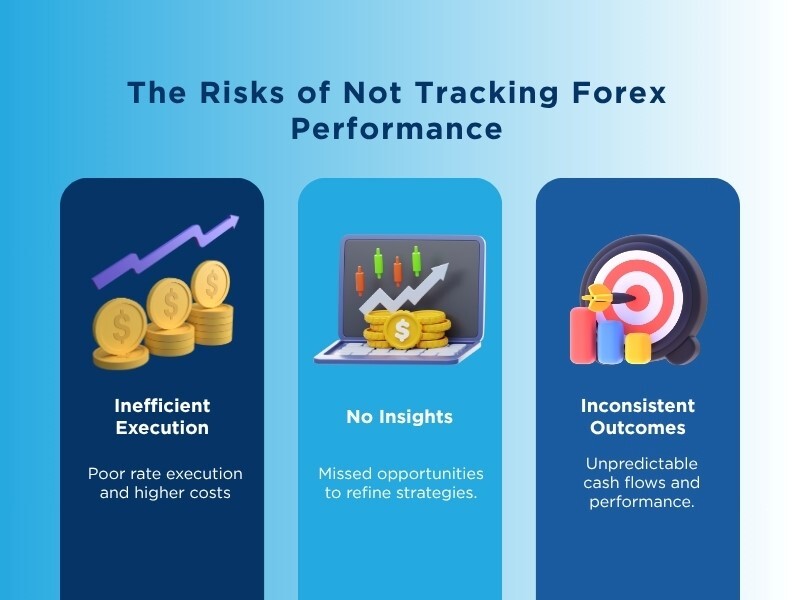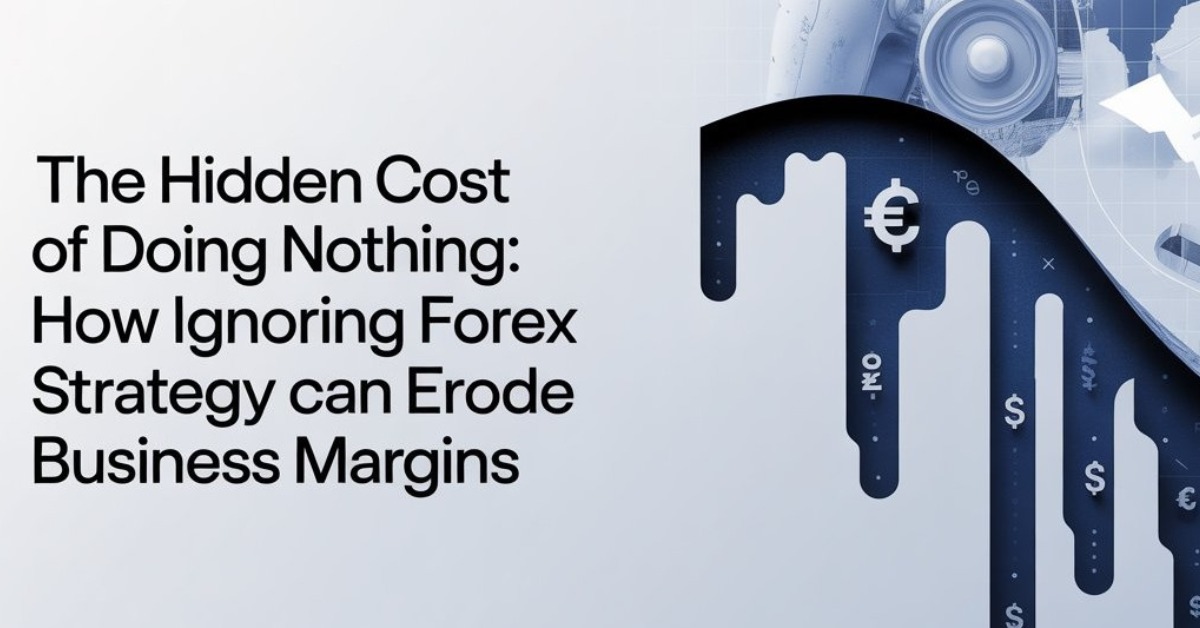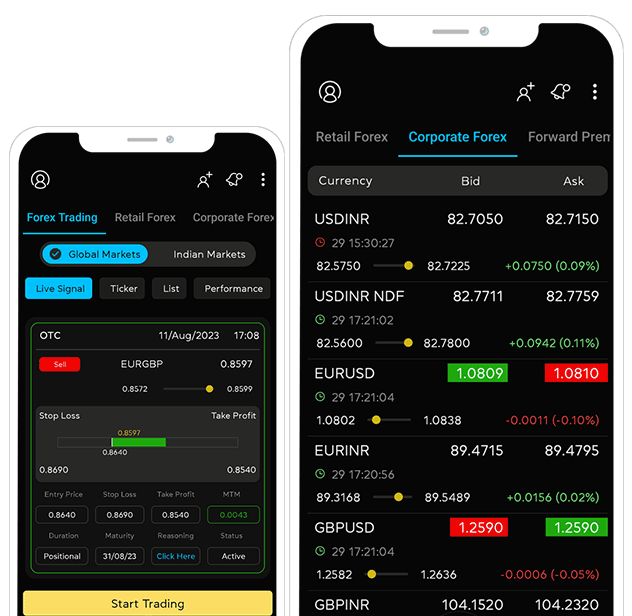3 Signs Your Forex Strategy Is Reactive (And How to Spot Them Early)
Introduction
In today's globalized economy, managing forex exposure isn't a luxury—it's a necessity. Many companies, however, still manage their currency risks reactively rather than proactively. This passive approach can lead to substantial financial losses, especially when unforeseen currency fluctuations catch them off guard. In this blog, we’ll dive into the three key signs that indicate your forex strategy is reactive and how you can shift to a more proactive approach that minimizes risk and maximizes profitability.
 Last-Minute Conversions: A Major Red Flag
Last-Minute Conversions: A Major Red Flag
One of the most apparent signs of a reactive forex strategy is last-minute currency conversions. If your company’s forex transactions are often hurried, you’re likely relying on short-term decisions rather than long-term planning.
Why Last-Minute Conversions Are Problematic:
- Missed Opportunities: Converting currency in a rush often means you’re not capitalizing on optimal exchange rates. Forex markets fluctuate constantly, and without forecasting, you may end up converting at unfavorable times, resulting in higher costs.
- Higher Costs: Waiting until the last minute to convert currencies often means accepting whatever rate is available at the moment, which can significantly impact your bottom line. Typically, banks will charge a premium for these rushed conversions, leading to higher spreads and less favorable rates.
How to Spot This Early:
If your finance team is under pressure to complete conversions before deadlines, this is a clear sign of a reactive strategy. A lack of preparation or anticipation for currency movements is a critical flaw that leaves your business vulnerable.
Solution:
To avoid last-minute conversions, develop a structured forex strategy that includes forecasting and exposure mapping. By identifying currency risks ahead of time, your company can plan conversions in advance and take advantage of more favorable market conditions.
No Formal Hedging Strategy: Exposed to Market Volatility
A well-structured forex hedging strategy is a cornerstone of any proactive currency risk management strategy. If your business lacks a formal hedging strategy or if one exists but is rarely used, this is a strong indicator of a reactive approach.
The Impact of Not Having a Hedging Strategy:
- Unprotected Profits: Without a hedge, fluctuations in exchange rates can erode profits from international sales or increase the cost of imports, directly impacting the profitability of your business.
- Increased Exposure: If currency movements aren’t hedged, your company may be exposed to unpredictable shifts in exchange rates, potentially resulting in significant financial losses.
- Lack of Forecasting: Not using a formal hedging strategy means your company may be ignoring currency risk forecasting, leaving it vulnerable to unexpected market volatility.
How to Spot This Early:
If your finance team struggles to explain or implement a coherent forex risk management strategy, this is a clear sign that your forex strategy may be reactive. A lack of formal policies or inconsistent use of hedging instruments indicates an absence of long-term planning.
Solution:
To shift to a more proactive approach, establish a formal hedging strategy. This includes deciding which currency exposures to hedge, setting thresholds for intervention, and selecting the appropriate hedging instruments (e.g., forwards, options). By locking in exchange rates for the future, you protect your company from the impact of adverse currency movements.
No Performance Tracking or Benchmarking: A Missed Opportunity for Growth
Another common sign of a reactive forex strategy is the absence of performance tracking or benchmarking. If you’re not measuring how well your forex strategy performs, it’s challenging to identify areas for improvement or to assess the effectiveness of your currency risk management.

The Risks of Not Tracking Forex Performance:
- Inefficient Execution: Without performance tracking, you may not recognize if your currency risk management practices are leading to suboptimal results. This can lead to poor rate execution and higher costs over time.
- No Insights for Improvement: Performance tracking allows companies to analyse past currency movements, learn from mistakes, and refine their strategies. Without this, you’re essentially operating in the dark.
- Inconsistent Outcomes: Reactive strategies, particularly those that rely on immediate decisions, lead to inconsistent cash flows and operational performance. Without knowing which strategies have been successful in the past, it’s difficult to replicate them in the future.
How to Spot This Early:
If you haven’t set clear benchmarks for your forex transactions or if your business doesn’t analyze the outcomes of previous currency exchanges, it’s time to reevaluate your approach. A lack of tracking or analysis is a key indicator of a reactive forex strategy.
Solution:
Implement a robust system for tracking forex performance. This includes setting benchmarks for execution, reviewing past transactions, and analyzing how well hedging strategies performed. Additionally, use tools that can automate and streamline this tracking to ensure your forex strategies align with overall business goals.
Tips to Shift Toward a Proactive Forex Strategy
Transitioning from a reactive to a proactive forex strategy requires a shift in mindset and the adoption of new tools and processes. Here’s how to make that change:
- Adopt Predictive Tools: Use forecasting tools and software that provide real-time market insights and help you anticipate currency movements. With this data, you can make informed decisions well in advance of payment or receipt dates.
- Work with Experts: Engage with forex advisors who can guide your company in building a customized strategy. Expert advice helps ensure that your approach aligns with your specific needs and risk appetite.
- Benchmark Your Performance: Regularly review your forex strategy’s performance against benchmarks and industry standards. Tracking key metrics such as cost savings, hedging success, and rate execution allows for continual improvement.
- Leverage Digital Platforms: Utilize digital platforms like Myforexeye app that offer seamless execution, real-time alerts, and analytics to optimize your forex strategy.
Conclusion
A reactive forex strategy not only leaves your company vulnerable to currency fluctuations but also leads to poor rate execution, inconsistent cash flows, and lost opportunities. By recognizing the signs of a reactive strategy—last-minute conversions, lack of a hedging strategy, and the absence of performance tracking—you can take proactive steps to protect your business’s margins and financial stability.
Switching to a proactive approach using forecasting tools and expert advisory will turn your forex strategy from a cost centre into a performance lever. With the right tools and mindset, your company can navigate the complexities of forex with confidence and precision.
FAQ (Frequently Asked Questions)
Q1: How can I start forecasting currency movements for my business?
Begin by using forex forecasting tools that provide insights into market trends and exchange rate predictions. Working with experts (like Myforexeye) in the field can help you build a strategy that aligns with your business goals and risk tolerance.
Q2: Why should my business have a formal hedging strategy?
A hedging Strategy helps protect your company from unexpected currency swings by locking in exchange rates for future transactions. This reduces financial uncertainty and ensures cost predictability.
Q3: What are the benefits of digital forex platforms?
Digital platforms like Myforexeye app offer real-time rate alerts, market relevant insights, and comprehensive analytics. This application help you streamline your forex operations and make it easier to manage risk proactively.
Q4: Can a proactive forex strategy really save my business money?
Yes! By anticipating currency fluctuations, locking in favorable rates, and avoiding last-minute conversions, you can reduce forex costs and improve margins over time. A proactive strategy helps you capitalize on favorable market conditions, protecting profitability.












